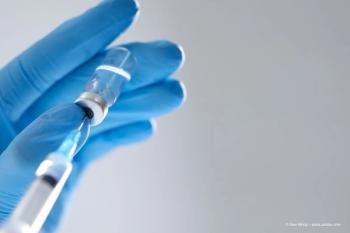
How DME patients may fare differently in ‘real world’ versus trials
Patients with diabetic macular edema (DME) being treated in a real-world clinical practice receive fewer injections of anti-vascular endothelial growth factor (VEGF) injections and their visual gains may be worse compared with patients who are in randomized clinical trials (RCTs).
Patients with diabetic macular edema (DME) being treated in a real-world clinical practice receive fewer injections of anti-vascular endothelial growth factor (VEGF) injections and their visual gains may be worse compared with patients who are in randomized clinical trials (RCTs).
Many studies performed in a real-world setting have reported that patients with DME receive as little as three to seven treatments during their first year of treatment for DME, and this has resulted in consistently suboptimal visual outcomes, according to Thomas Ciulla, MD, and colleagues John Pollack, MD, and David Williams, MD.
In a previous study that included a 1-year cohort of 5,860 eyes with DME, Dr. Ciulla et al. reported that after the patients were treated with a mean of 7.8 anti-VEGF injections, 0.2 focal laser treatments, and 0.1 corticosteroid injections, the mean change in visual acuity (VA) was +5.2 letters.
In the current retrospective study, the investigators wanted to assess the treatment intensity and its association with the visual outcomes. The study included 28,658 treatment-naïve eyes with DME treated from 2013 to 2018. The mean patient age was 62.1 years, and the mean baseline VA was 59.2 letters (20/60 Snellen). The patients had been treated for 1 year as follows: aflibercept (Eylea, Regeneron Pharmaceuticals), 23%; ranibizumab (Lucentis, Genentech), 24%; and bevacizumab (Avastin, Genentech), 53%.
The authors found, “At 1 year, 28, 658 patient eyes underwent a mean of 6.4 anti-VEGF injections, gaining a mean of +4.2 letters (95% confidence interval for mean gain: +4.0 to +4.5 letters, p < 0.001).” The study results were reported in the British Journal of Ophthalmology (http://dx.doi.org/10.1136/bjophthalmol-2020-315933).
Stratification by the anti-VEGF medication and the study years showed no clinically meaningful differences in injection frequency or 1-year VA changes.
After 1 year of treatment, half of the eyes had received six or fewer injections, and fewer than 20% of patients received 10 to 13 injections, which is equivalent to monthly treatment.
The authors commented that generally a linear relationship was seen between the mean number of letters gained at 1 year and the mean number of anti-VEGF injections, beyond two injections.
“The mean 1-year VA change tended to increase in patient eye with both increased anti-VEGF frequency and decreased baseline VA, although there were some ceiling effects related to the baseline VA, with the exception of those who had received from 10 to 13 anti-VEGF injections,” they said.
The study also found that patients treated in a real-world scenario and not a RCT who had relatively good baseline VA of 20/40 or better generally were at risk of VA loss at 1 year. In contrast, the patients with DME with moderately severe baseline visual impairment (20/70 to 20/200) who received 10 or more injections improved by a mean of +10.3 letters.
“As the healthcare system shifts to value-based approaches, real-world outcomes assume greater importance; these results highlight the necessity for patient counseling on treatment frequency with current anti-VEGF therapy also highlight the unmet need for longer duration therapies that can address treatment burden,” the study concluded.
Disclosures:
Dr. Ciulla is from Indiana University School of Medicine and the Midwest Eye Institute, Indianapolis.
Dr. Pollack is from Rush University, and Illinois Retina Associates, both in Chicago.
Dr. Williams is from the University of Minnesota and VitreoRetinal Surgery, PA, both in Minneapolis.
Newsletter
Keep your retina practice on the forefront—subscribe for expert analysis and emerging trends in retinal disease management.














































